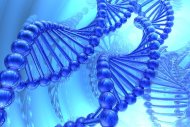 A Denisovan Legacy in the Immune System?
A Denisovan Legacy in the Immune System?A study published online in Science this week suggests that mating between human ancestors and other now-extinct groups boosted the immune systems of early Europeans and Asians.
Everybody knows about the dangers of inbreeding. In fact the reproductive strategies of many animals are based on avoiding it, as when female chimpanzees move out of their birth groups to mate. Last year, researchers showed that human ancestors took that strategy to its limits by breeding with the now-extinct Neandertals and Denisovans (Science, 28 January, p. 392).
Now a study published online inScience this week (http://scim.ag/Abi-Rached) suggests that such mating was beneficial, boosting the immune systems of early Europeans and Asians and leaving a valuable legacy in the genes of many people alive today. “This is the first suggestion that something that came from archaic hominins into modern humans conferred an advantage,” says paleogeneticist Svante Pääbo of the Max Planck Institute for Evolutionary Anthropology in Leipzig, Germany.
Genomic data from fossils thus far suggest that living people carry only small amounts of archaic DNA. Only 2% to 7% of the DNA of today's Europeans and Asians apparently came from the ancient Denisovans and Neandertals (see main text). The new paper examines Europeans and Asians and finds that archaic people contributed more than half of the alleles that code for proteins made by the human leukocyte antigen system (HLA), which helps the immune system recognize pathogens. “Archaic alleles have significantly shaped modern human immune systems,” wrote Peter Parham and Laurent Abi-Rached of Stanford University in Palo Alto, California.
Immunogeneticist Parham has spent 16 years puzzling over the evolution of one rare HLA allele, called HLA-B*73. This variant is quite different from others but is similar to alleles in the same position in the genomes of chimps and gorillas. So it seems to be ancient, perhaps arising long before our ancestors split from gorillas about 16 million years ago. Yet today, B*73 is concentrated in western Asia, where modern humans have lived for less than 90,000 years, and it is absent from African tribes who usually carry the most ancient gene lineages.
 |
| The allele HLA-B*73, today mostly seen in west Asia, may come from Denisovans. |
While studying this allele, Parham's team got a big break last year when Pääbo's team published the complete genome of the Denisovan cave girl. She didn't carry B*73—and it hasn't been found in Siberia—but she carried two other linked HLA-C variants, which occur on the same stretch of chromosome 6. If living people have any of these variants, they almost always carry at least two of the three variants—as did the cave girl. So even though she lacked B*73, the researchers propose that all three variants were inherited, often in pairs, from archaic humans in Asia. The Denisovans are the prime suspects, given their presumed distribution in Asia.
The team also examined other HLA alleles in three Neandertals and one Denisovan and found several other ancient variants that today show up in living Asians or Europeans. Parham thinks these variants were beneficial and so, once acquired from archaic people, spread rapidly in small but expanding modern populations. “The fact [that these genes] may have been parachuted into modern humans is an attractive interpretation,” says immunologist John Trowsdale of the University of Cambridge in the United Kingdom.
However, others are not quite convinced that the alleles came from archaic humans. Parham's team hasn't completely ruled out other explanations for the gene distributions, such as certain types of selection, says geneticist David Reich of Harvard University. Regardless, he says, “I am happy to see people using archaic genomes for different kinds of analyses.”
Response by Ann Gibbons on Science
